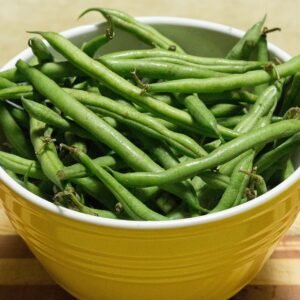This post may include affiliate links which means I may receive a commission from purchases made through links. I will only recommend products I have personally used. Learn more on my private policy page.
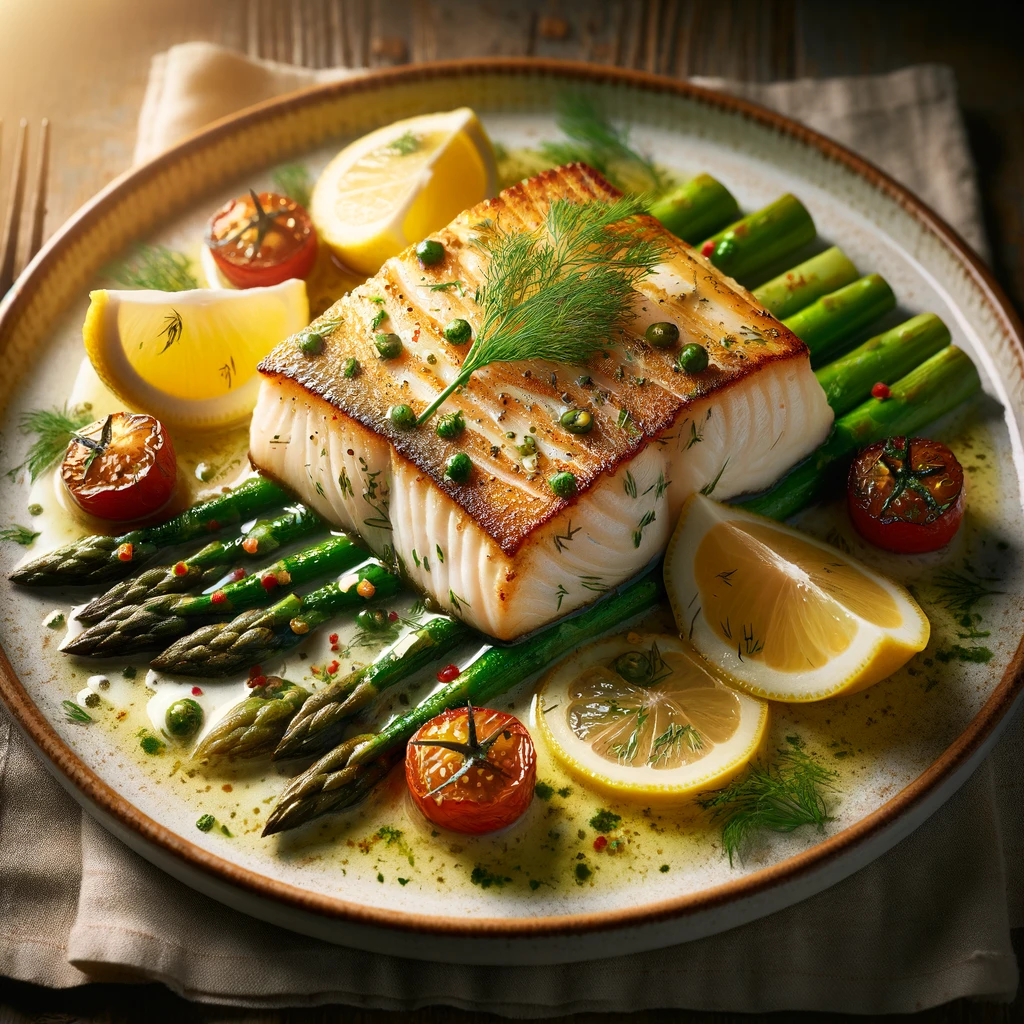
Are you looking for the best way to cook halibut?
Look no further! In this article, we will explore the different aspects of cooking halibut, from selecting the perfect piece to preparing it for cooking and finally, the best cooking methods.
Whether you’re a seasoned chef or a novice in the kitchen, this guide will help you unlock the flavor of this delicious fish.
Understanding Halibut and Its Culinary Uses
Halibut stands out in the seafood world for its dense, meaty texture and subtle sweetness, making it a prime candidate for a variety of culinary applications.
This fish’s broad, flaky flesh readily absorbs the flavors of seasonings and marinades, offering a canvas for a wide array of taste profiles, from the simple and delicate to the robust and spicy.
Its versatility in the kitchen means halibut can be presented in numerous forms: elegantly seared to perfection with a golden crust, gently baked with aromatic herbs, or grilled over an open flame for a smoky finish.
Nutritional Profile
Moreover, halibut’s nutritional profile adds another layer of appeal to its culinary uses.
Packed with high-quality protein and a good source of omega-3 fatty acids, it supports heart and brain health, aligning well with diets that prioritize wellness without sacrificing taste.
This aspect makes it an excellent choice for health-conscious food enthusiasts looking to maintain a balanced diet without compromising on flavor or texture.
Chefs and home cooks alike treasure halibut for its ability to pair seamlessly with a wide range of accompaniments.
From light, citrusy sauces that accentuate its mild flavor to more hearty, cream-based sauces that complement its firm texture, halibut can adapt to various cooking styles and ingredient combinations.
Whether it’s featured in a sophisticated gourmet dish or a simple, home-cooked meal, halibut remains a beloved ingredient in kitchens around the globe for its taste, versatility, and nutritional benefits.
Selecting the Perfect Piece of Halibut

Choosing the right piece of halibut is crucial for achieving the best culinary outcome. When you’re at the market or fishmonger’s, the first thing to note is the appearance of the halibut fillets.
You want to select pieces that boast a moist, translucent look without any signs of browning or drying out, as these are indicators of freshness and quality.
The color should be a uniform, creamy white, though some variation is natural depending on the specific type of halibut.
Another key aspect to consider is the smell of the fish. Fresh halibut should have a clean, briny scent reminiscent of the sea. Any strong, unpleasant fishy odors are a red flag, suggesting that the halibut is past its prime.
It’s also wise to feel the texture of the fillet; it should be firm and bounce back slightly when pressed. This texture indicates that the fish is fresh and has been handled properly.
Wild-caught halibut is generally preferred by culinary experts for its superior flavor and texture compared to farm-raised alternatives.
Wild halibut feeds on a natural diet in the ocean, which contributes to its lean flesh and subtle, sweet flavor profile.
If sustainability and environmental impact are concerns for you, look for certifications such as the Marine Stewardship Council (MSC) label, which ensures that the fish was caught in a manner that supports healthy ocean ecosystems.
Finally, consider the size of the fillet for your specific recipe or meal plan. Halibut can be bought in whole steaks, smaller fillets, or even as cheeks, which are a delicacy.
Each cut offers a different cooking time and flavor experience, so select the piece that best suits your culinary needs.
Essential Ingredients for Cooking Halibut
To capture the essence of halibut and elevate its delicate flavors, incorporating a handful of key ingredients is crucial.
Olive Oil
Begin with high-quality olive oil, which will serve as the base for cooking, adding a subtle richness and ensuring your halibut doesn’t stick to the pan or baking sheet.
Fresh Lemon
Fresh lemon is indispensable, lending a zesty brightness that complements the fish’s natural sweetness. Freshly squeezed lemon juice can be used to season the halibut before cooking or as a finishing touch before serving.
Garlic
Garlic, minced or sliced, is another essential ingredient that infuses the halibut with aromatic depth.
Whether you choose to rub the fillets with a garlic-infused oil or scatter slices around the fish as it cooks, garlic enhances the overall flavor profile without overwhelming the star ingredient.
Herbs
Herbs play a significant role in cooking halibut, adding layers of flavor and a pop of color to the dish.
Parsley
Parsley and dill are particularly suited to seafood, offering fresh, herbal notes that brighten the dish.
Finely chop these herbs to sprinkle over the cooked fish or incorporate them into a marinade or sauce.
Salt and Pepper
Salt and pepper are the final touch, essential for seasoning the halibut to perfection.
A generous pinch of salt, preferably sea salt for its nuanced flavor, and a grind of fresh black pepper before cooking will enhance the natural flavors of the halibut, ensuring every bite is savory and delicious.
Together, these ingredients form the foundation of a perfectly cooked halibut dish, balancing simplicity with sophistication, and allowing the natural beauty of the fish to shine through.
Preparing Your Halibut for Cooking – Step by step
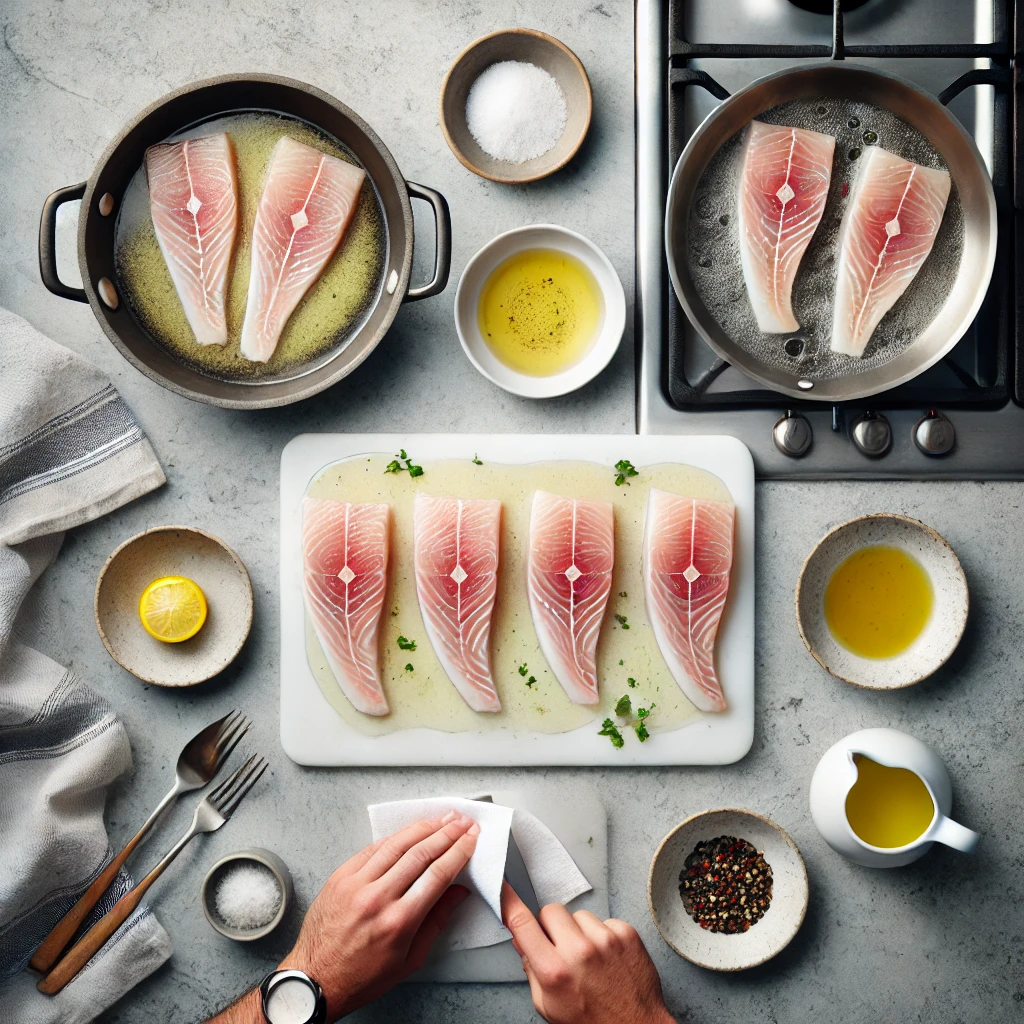
To start the preparation process of your halibut for cooking, it’s critical to ensure that the fillets are ready to absorb all the flavors you’ll be adding to them.
- Begin by carefully drying off each piece of halibut using paper towels.
This step is vital as it helps remove any surface moisture that could prevent your seasonings from adhering properly or lead to steaming instead of searing when cooked.
2. Next, season both sides of the halibut fillets evenly with salt and freshly ground black pepper to taste.
The salt not only seasons the fish but also helps to draw out moisture, ensuring a better texture after cooking.
3. Then, apply a light coating of high-quality olive oil over the fillets.
This helps in two ways: it prevents the fish from sticking to your cooking surface, and it also aids in the transfer of heat, ensuring an even cook throughout the fillet.
4. Allow the seasoned fillets to sit at room temperature for approximately 15 minutes before cooking.
This crucial step brings the fish closer to room temperature, promoting a more even cooking process.
Cold fish placed directly onto a hot cooking surface can seize, leading to unevenly cooked sections.
5. While the halibut is resting, this is an ideal time to preheat your chosen cooking appliance, whether it be your oven, grill, or stovetop pan.
Ensuring your cooking surface is at the right temperature before adding your fish is essential for achieving that perfect sear or bake.
By following these preparatory steps, you’re setting the stage for a beautifully cooked piece of halibut that is sure to impress with its optimal texture and enhanced flavors.
The Best Cooking Methods for Halibut

Grilling, baking, and pan-searing stand out as the top cooking methods to bring out the halibut’s natural flavors while achieving a desirable texture—crisp on the outside, moist and tender on the inside.
Each method offers a unique approach to cooking halibut and can be tailored to your taste preference and the specific dish you’re preparing.
Grilling
Grilling halibut adds a smoky dimension to its flavor profile, ideal for outdoor cooking and summer meals.
To grill halibut, lightly oil the grill and the fish to prevent sticking.
Cook over medium-high heat for about 3-5 minutes per side, depending on the thickness of the fillets.
This method imparts a charred flavor that complements the mild taste of halibut beautifully.
Baking
Baking is a hands-off, foolproof method that preserves the moisture and delicate texture of halibut.
To bake, place seasoned fillets on a lined baking sheet and cook in a preheated oven at 400°F for 12-15 minutes.
Baking allows for the use of additional ingredients like citrus slices, herbs, and vegetables to infuse the fish with extra flavor as it cooks.
Pan Searing
Pan-searing halibut creates a beautifully golden crust that adds texture and flavor.
Start by heating a heavy skillet with a small amount of oil over medium-high heat. Place the seasoned fillets in the pan, cooking for 3-4 minutes on each side.
The key to a perfect sear is not to overcrowd the pan and to resist the urge to move the fish too soon.
Each of these methods enhances the halibut’s flavor and texture, allowing you to experiment and discover your preferred technique.
Whether you choose to grill, bake, or pan-sear, cooking halibut to perfection requires a gentle hand and close attention to timing to ensure the fish remains succulent and flavorful.
Step-by-Step Recipe for Perfectly Cooked Halibut

- Begin by preheating your oven to a crisp 400°F, creating the perfect environment for baking halibut.
2. Take your halibut fillets and generously season them on both sides with salt and freshly ground black pepper, enhancing their natural flavors.
3. To introduce a zesty undertone that brightens the fish’s sweetness, squeeze fresh lemon juice over the fillets.
This not only adds flavor but also tenderizes the fish slightly.
4. Arrange the seasoned fillets on a baking sheet that has been lined with parchment paper, ensuring none of the fillets are touching.
This setup facilitates even cooking and prevents the fish from sticking to the baking sheet.
5. Slide the prepared fillets into the preheated oven, letting them bake undisturbed for a duration of 12-15 minutes.
The exact timing will depend on the thickness of your fillets; they should reach a point where their color shifts to opaque, and they flake readily under the gentle pressure of a fork.
6. Once the halibut has reached this optimal point of doneness, carefully remove the baking sheet from the oven. The fillets are now ready to be served.
7. They can be plated as the star of the meal, complemented by sides that harmonize with their delicate flavor and texture.
8. Consider garnishing with a final drizzle of lemon juice or a sprinkle of fresh herbs to elevate the dish further.
Pairing Sides and Wines with Halibut
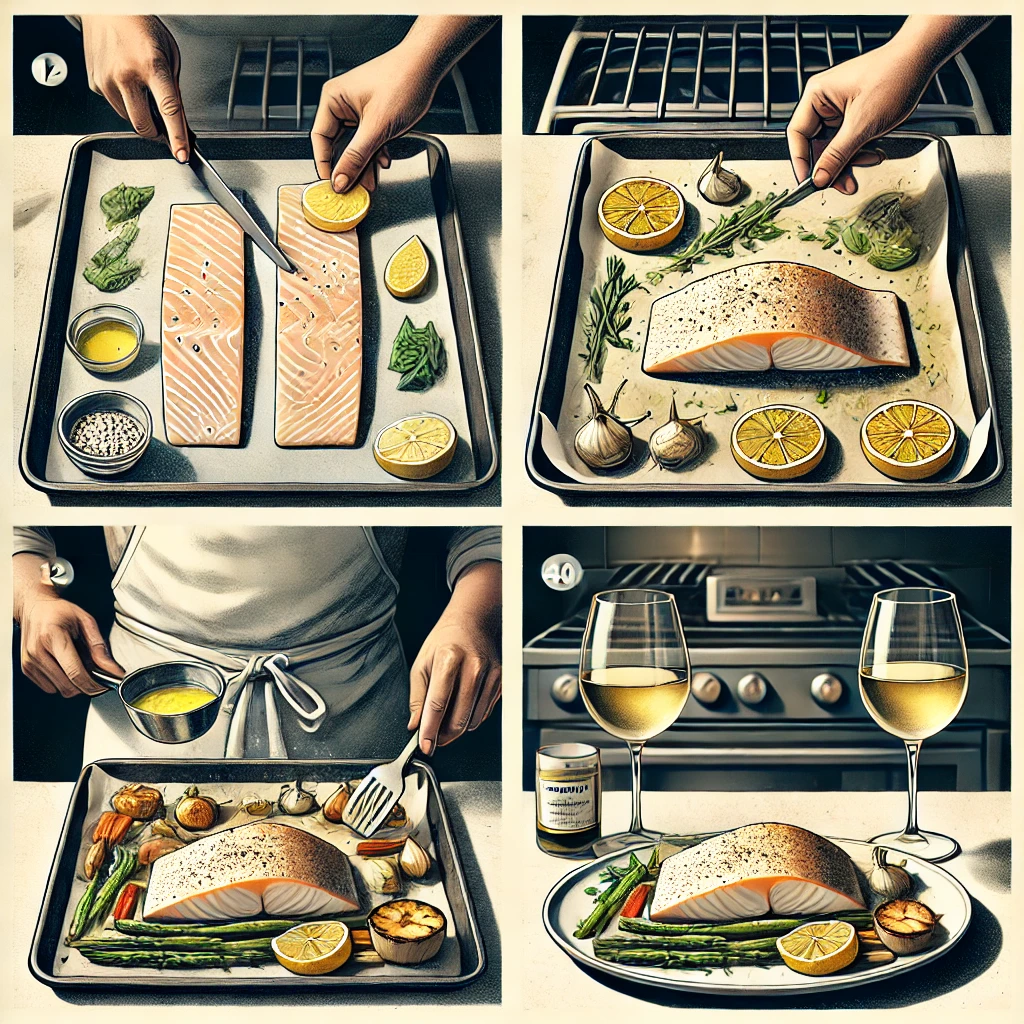
A harmonious pairing enhances the subtle, sweet flavors of the halibut while providing a balanced plate that satisfies the palate.
For sides, consider light, yet flavorful options that won’t overshadow the star of the meal. A medley of roasted vegetables, seasoned lightly with herbs and olive oil, offers a colorful and nutritious complement.
Alternatively, a creamy risotto or a delicate quinoa salad can add a comforting texture contrast to the flaky fish.
For a fresher approach, a crisp green salad dressed with a vinaigrette that echoes the lemony notes of the halibut brings a delightful crispness to the meal.
When it comes to wine pairing, the goal is to match the elegance and flavor profile of the halibut. A Sauvignon Blanc, with its crisp acidity and citrus undertones, aligns beautifully with the fish’s light flavors.
A well-oaked Chardonnay, offering a fuller body and hints of vanilla, can complement the richness of the halibut, especially if it’s prepared with a creamy sauce.
For those who prefer a touch of sweetness, a dry Riesling with its fruity notes and minerality can be a refreshing counterbalance to the savory elements of the dish.
Selecting the right wine and sides turns a simple halibut meal into a refined dining experience, showcasing the fish’s versatility and elevating its delicate flavors.
Common Mistakes to Avoid When Cooking Halibut
When embarking on the culinary journey of cooking halibut, several pitfalls can easily detract from the exquisite experience this fish is capable of offering.
1. Undercooking
A critical error often made is neglecting the fish’s thickness when determining cooking time, leading to over or undercooking.
Each piece’s unique dimensions demand attention; a universal cooking time does not apply. Misjudging the heat level is another common oversight.
High heat might seem like a fast track to a delightful sear, but it can also result in an unpleasantly dry interior. Aim for a medium-high heat that allows for a gentle cooking process, preserving the moisture and tenderness of the halibut.
2. Over Seasoning
Another oversight involves the seasoning process.
While it’s tempting to lavishly season the fish, halibut’s charm lies in its mild, sweet flavor, which can be overshadowed by aggressive seasoning. It’s best to use a light hand, enhancing rather than masking its natural taste.
3. Choice of Cooking Oil
Furthermore, the choice of cooking oil can impact the outcome. Oils with a low smoke point may burn, imparting a bitter taste to the fish.
Opt for oils suited for medium-high cooking temperatures to avoid this issue.
4. Over Crowding
Lastly, overcrowding the pan can lead to steaming instead of searing, robbing the halibut of its potential golden crust.
Ensure each piece has ample space to cook evenly, allowing for that desirable texture and depth of flavor.
Exploring Global Halibut Recipes

Diving into the diverse world of halibut recipes reveals the global appeal of this versatile fish.
Mexican Flair
For a touch of Mexican flair, consider halibut tacos, where the fish is marinated in lime and spices before being grilled and served in soft tortillas with fresh salsa and avocado.
South Asian Cuisine
Moving east, a halibut curry inspired by South Asian cuisine offers a rich tapestry of flavors, simmering the fish in a coconut milk-based sauce infused with turmeric, ginger, and cilantro.
Italian
In Italy, halibut finds its way into elegant pasta dishes, lightly sautéed with garlic, cherry tomatoes, and olives, then tossed with al dente spaghetti and a drizzle of olive oil.
Traditional Japanese
Meanwhile, a traditional Japanese approach might involve gently poaching halibut in a dashi broth, serving it with steamed rice and pickled vegetables for a meal that highlights the fish’s delicate texture and flavor.
Each of these recipes showcases halibut’s ability to adapt to a range of cooking techniques and ingredient combinations, making it a favorite among cooks seeking to bring a touch of international cuisine to their kitchen.
Storing and Reheating Leftover Halibut
Storing
Properly storing and reheating leftover halibut is essential to maintaining its quality and flavor for a delightful second serving.
Once you’ve finished your meal, transfer any uneaten halibut into airtight containers and promptly place them in the refrigerator.
This method helps to keep the fish fresh, ensuring it stays safe and delicious for up to two days after the initial preparation.
Reheating
When you’re ready to enjoy your halibut again, opt for a gentle reheating method to preserve its tender texture. The best way to reheat halibut is on the stove, using a low heat setting.
Add just a small amount of water or broth to the pan to create a moist environment, which helps to rehydrate the fish without making it soggy.
Cover the pan with a lid to evenly distribute the heat and retain moisture. This approach ensures that the halibut warms through without losing its succulence or becoming dry.
It’s important to avoid using high heat or microwaving the fish, as these methods can cause the halibut to become tough and lose its delicate flavor nuances.
By following these steps, you can savor your halibut leftovers in a way that feels almost as freshly prepared as the first time.
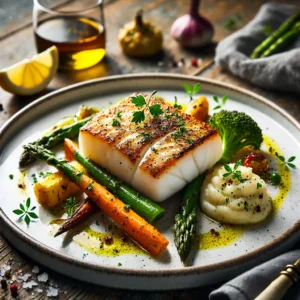
Easy and Delicious Halibut Recipe: The Best Way to Cook Halibut
Equipment
- 1 Baking sheet
- 1 Parchment Paper
- 1 Basting brush
- 1 Fork For Testing Doneness
Ingredients
For the Halibut:
- 4 halibut fillets 6-8 ounces each
- 2 tablespoons olive oil
- 1 teaspoon kosher salt or to taste
- ½ teaspoon freshly ground black pepper or to taste
- 1 lemon zested and juiced
Optional Garnish:
- 2 tablespoons fresh parsley or dill chopped
Instructions
Preheat the Oven:
- Preheat your oven to 400°F (200°C). Line a baking sheet with parchment paper to prevent sticking.
Prepare the Halibut:
- Pat the halibut fillets dry with paper towels to remove excess moisture. This step ensures a nice sear and prevents steaming.
Season the Fillets:
- Brush both sides of the fillets with olive oil. Sprinkle evenly with salt, black pepper, and lemon zest. Squeeze fresh lemon juice over the fillets for a zesty flavor.
Arrange on Baking Sheet:
- Place the fillets on the prepared baking sheet, ensuring they are not touching. This promotes even cooking.
Bake the Halibut:
- Transfer the baking sheet to the oven and bake for 12-15 minutes. Cooking time will depend on the thickness of your fillets. The fish is done when it becomes opaque and flakes easily with a fork.
Optional Finish:
- For a crispier exterior, broil the fillets for 2-3 minutes after baking. Watch carefully to avoid overcooking.
Serve and Garnish:
- Remove the halibut from the oven and transfer to serving plates. Garnish with chopped fresh parsley or dill for a burst of freshness.
Nutrition Information: (Per Serving)
- Calories: 210
- Protein: 25g
- Fat: 10g
- Carbohydrates: 1g
- Fiber: 0g
- Sugar: 0g
Notes
Pair with roasted vegetables, quinoa salad, or creamy mashed potatoes for a complete meal.
Leftovers can be stored in an airtight container in the refrigerator for up to 2 days. Reheat gently to avoid drying out.
Related Articles:
How to Cook Tenderloin Steak Perfectly Every Time
Conquer the Grill: How to Grill Filet Mignon Perfectly Every Time
As an Amazon Associate, I earn commission from qualifying purchases.

